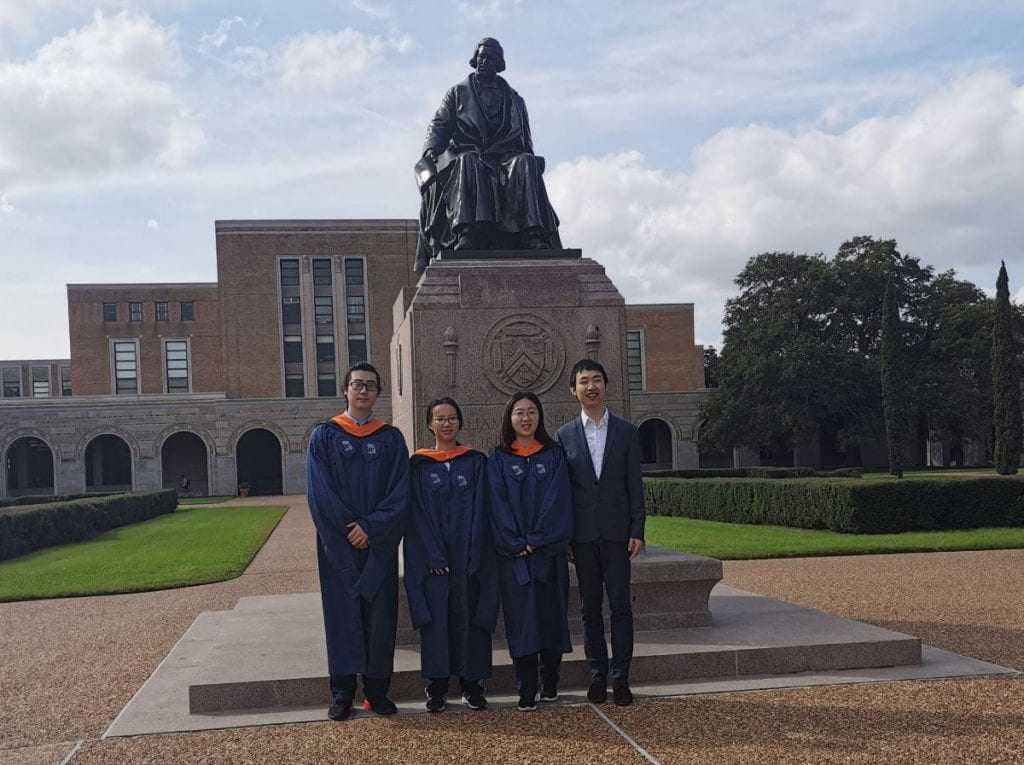Hanyu and collaborators received $2.5M support from the Keck foundation and Rice University to search for exotic quantum states formed by all the spins in a visible piece of material. The phenomenon, called “quantum squeezing”, describes the entanglement of spins that allows their quantum fluctuation to cancel each other, resulting in higher precision in certain measurements than what is expected from Heisenberg uncertainty principle. Usually in materials with many atoms, such entanglement should diminish very quickly, but theoretical predictions and experimental results indicating the strong interaction among spins may actually stabilize the quantum state and automatically reestablish the squeezing at very low temperatures. The Rice team plans to push the limit of their tools in this unexplored territory. More details of the project can be found in the news report here.
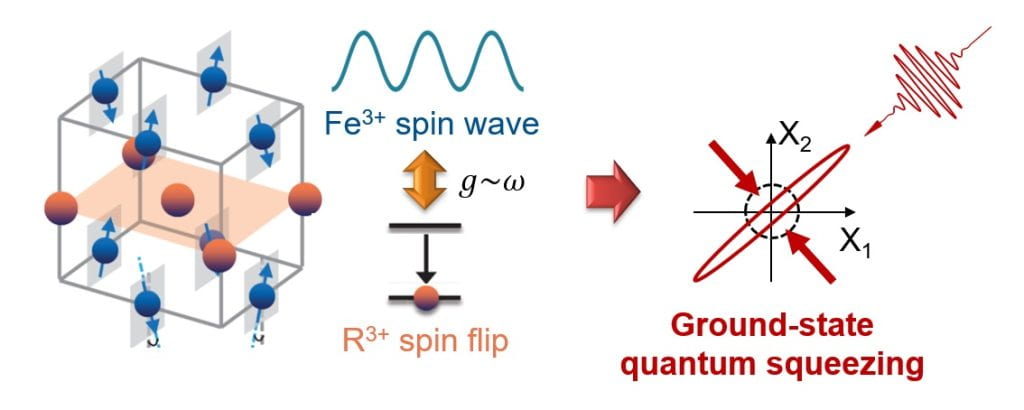
Author Archives: Hanyu
Hanyu receives the prestigious NSF CAREER award
Congratulations to Hanyu for receiving a 5-year support through the NSF Faculty Early Career Development (CAREER) program! The project entitled “Probing Quantum Materials Modified by Terahertz Quantum Fluctuations” aims to use ultrafast spectroscopy to study the strong interaction between light and atomic motion in materials from ferroelectric insulators to two-dimensional magnets. The quantum uncertainty principle allows atoms to jitter even at very low temperatures and without any light shining on the materials, possibly modifying the average lattice structures and the ways of energy flow among the hybrid light-matter coupled states called the phonon-polaritons. The project also supports education on optical and quantum materials at Rice and outside campus. More information can be found in the news report here.
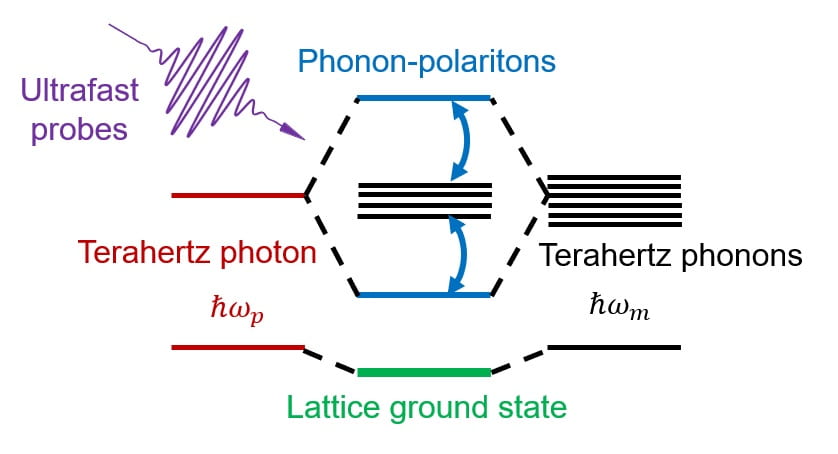
Piezoelectricity created at the 1D boundary of 2D lateral homojunctions
Phase boundaries can exhibit new properties that neither of the two sides possess. In ultrathin 2D crystals of MoTe2, both the 2H and 1T’ phases have very weak, if any, inversion symmetry breaking, and thus do not have strong piezoelectricity. However, the metal-semiconductor junction between these two phases has a build-in electric field, so the wavefunctions are asymmetric at the boundary. In this work, we extracted the tiny displacement of these boundary atoms as a result of interfacial piezoelectricity in the CVD-grown 2H-1T’ MoTe2 homojunctions by vector piezoresponse force microscopy. The additional torque from the atoms was distinguished from electrostatic background, and qualitatively agreed with the first-principle calculations. Our findings demonstrate the versatility of boundary engineering in nanoscale electromechanical devices. See more news and details of this work in collaboration with Ajayan group at Rice MSNE.
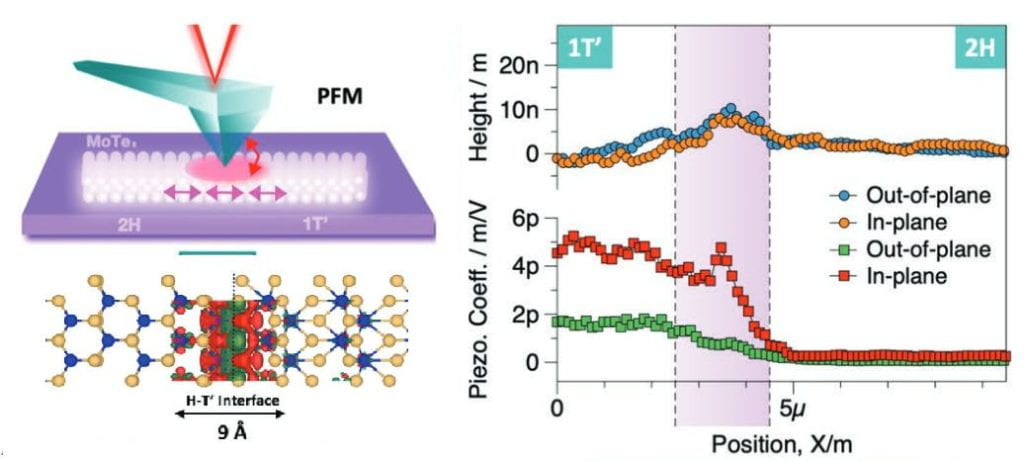
Hanyu talked about materials and quantum science in Engineering Research Symposium for Teachers
Only a small fraction of students know the existence of Materials Science as a discipline before they enter college. Meanwhile, materials science nowadays is not only the cornerstone of all modern manufacturing but also the enabler of new information, nano- and quantum technologies. In the guest lecture in Rice Engineering Research Symposium for Teachers, Hanyu discussed the importance of connecting materials and quantum concepts with the societal needs and careers in emergent industries in K-12 educations, as well as basic techniques to present these concepts. Exit survey showed that 43% participants would like to teach more about materials in their classroom and/or science clubs, and 91% of them want to try demonstration kits once available. These feedbacks will help to develop new effective ways to engage K-12 students in specialized engineering fields.

Seeing the chiral domains with nonlinear imaging
Elemental tellurium is a fascinating chiral semiconductor with high refractive index, excellent infrared transmission and strong spin orbit coupling, and has great potential for photonic and spintronic devices. The as-synthesized tellurium crystals, however, are typically racemic mixtures of chiral domains. In this work, we designed a simple and scalable optical imaging method based on polarization resolved nonlinear harmonic generation to identify the chirality in tellurium nanowires, which correlates with the structural helicity of the wires observed in transmission electron microscope. The ability to quickly identify chiral structures and domain boundaries may enable more studies on their novel transport properties. This work was performed in collaboration with Pettes group in Los Alamos National Laboratory and published in Nanoscale.
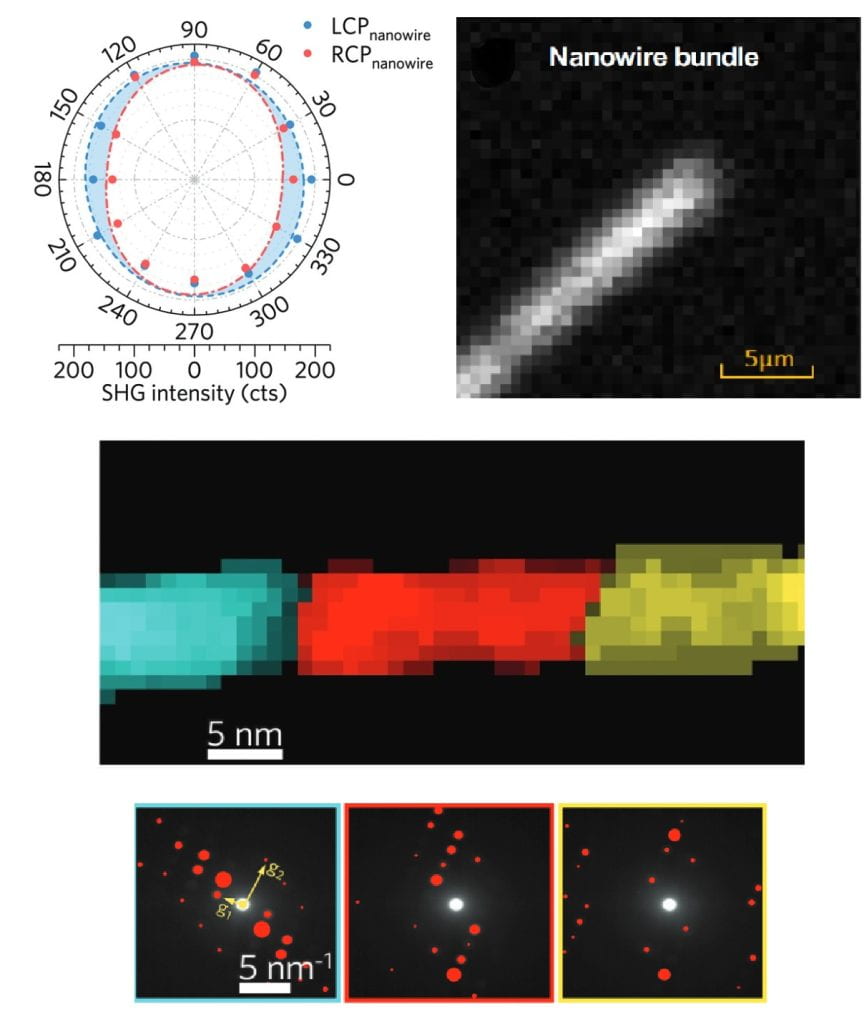
Valleytronics Meets Energy Harvesting
Valleytronics, a new and potentially energy-efficient form of computing hardware, was previously thought to be incompatible with perovskite, a promising energy harvesting semiconductors. Having both functionalities in one single-crystal material is beneficial for monolithically integrated information technology in industrial fabrication. In this work, we identified the necessary atomic lattice symmetry for valleytronics in newly synthesized ultrathin perovskite with nonlinear optical spectroscopy. The finding of entirely different symmetry properties from bulk materials led to the discovery of robust optical valley memory effect, which is surprising at the first glance but understandable from first principle calculation. This collaborative work with Lou group at Rice MSNE and Qian group at TAMU MSE is now published in Advanced Materials. Read more at Rice News.
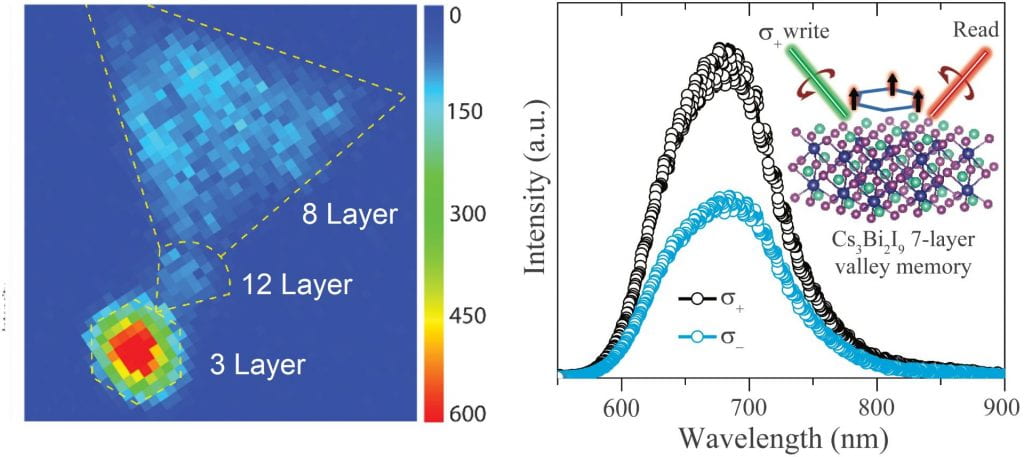
Congratulations Xiaotong as the new Rice Academy Fellow!
Nice job Xiaotong, in presenting your excellent research vision and plan in quantum optics. Welcome to the prestigious and multidisciplinary research community!

Figure courtesy of Rice Academy
Photocatalyst driven by the invisible
Light-controlled polymerization has wide applications in additive manufacturing and medicine, but the common catalysts work under UV-blue light, which does not penetrate beyond the surface of the materials or tissues, and may have negative physiological effects. In this work, we demonstrated that perovskite nanocrystals are excellent nonlinear photocatalyst that can be activated with near-infrared light. The giant two-photon absorption coefficient of the nanocrystal, compared with dye molecule catalysts, allows efficient volumetric reaction. Applying a special type of polymerization, PET-RAFT, we showed that the entire solution volume of 1 mL contains polymer chains with highly uniform molecular length (dispersity of 1.07 is very close to unity), which is challenging for conventional laser direct writing. This collaborative work with Egap group at Rice MSNE is published in ACS Macro Letters.

Copyright 2020 American Chemical Society
Congratulations Lissa for winning the NSF GRFP!
Excellent shot Lissa, with your beautifully articulated research agenda in light-driven robots! We know you deserve it! Use it well to serve our local community! Read more at Rice News.
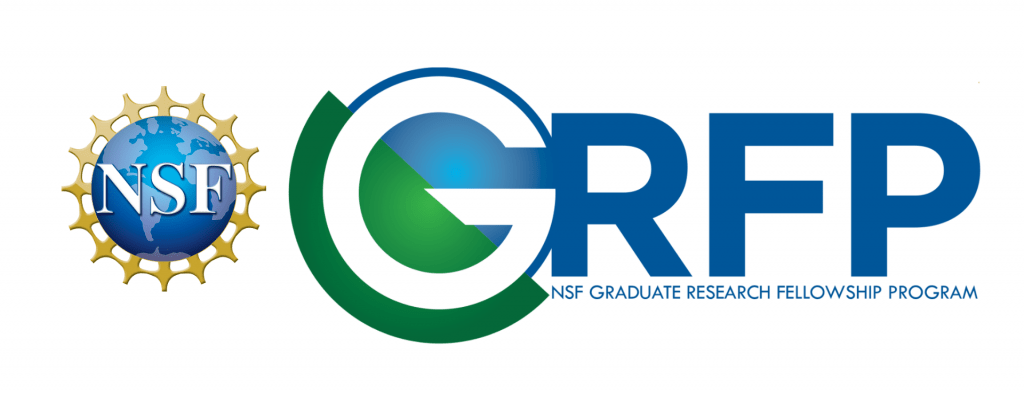
Figure courtesy of National Science Foundation
Meet new (Jedi) Masters!
Congratulations to Yuxuan, Xiangyi and Liu for obtaining the master’s degree! We witnessed your growth in science, skills and maturity in the past year. Wish you all a bright future in career and life!
